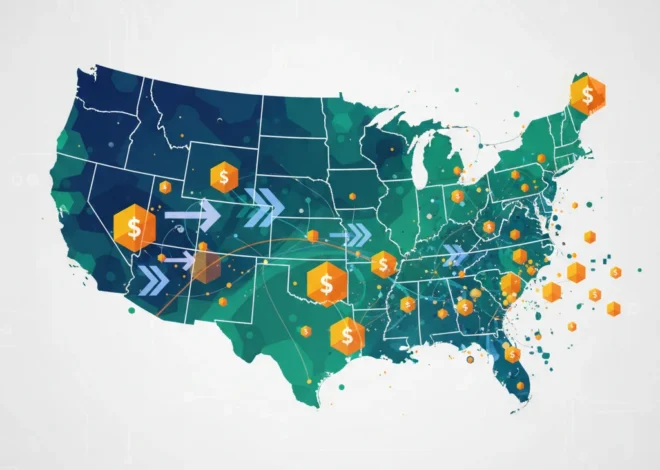
Beyond the Headlines: Navigating Geopolitical Risk in the Modern Financial Landscape
In our hyper-connected world, a single event in a distant corner of the globe can send shockwaves through the entire international system. Events stemming from geopolitical instability, such as the turmoil in Afghanistan that has led to widespread displacement (source), are often viewed through a humanitarian or political lens. However, for investors, finance professionals, and business leaders, these events are also critical data points that carry profound implications for the global economy, investment strategies, and the future of financial technology.
Understanding the intricate connections between geopolitical shifts and market dynamics is no longer a niche specialty for emerging market funds; it is a fundamental requirement for sound financial stewardship. From fluctuating commodity prices to the accelerated adoption of fintech solutions for cross-border payments, the ripple effects are vast and complex. This article delves into the multifaceted impact of geopolitical instability on the financial sector, offering a framework for navigating risk and identifying opportunities in an increasingly uncertain world.
The Macroeconomic Shockwave: How Instability Reshapes the Global Economy
The most immediate and discernible impact of a geopolitical crisis is on the macroeconomic landscape. When a nation experiences significant upheaval, the consequences radiate outward, affecting global trade, supply chains, and inflation. The situation in Afghanistan, for example, has far-reaching economic consequences beyond its borders.
Firstly, consider the impact on commodity markets. Afghanistan is estimated to hold mineral deposits worth over $1 trillion, including vast reserves of lithium, iron, copper, and rare earth elements—critical components for everything from smartphones to electric vehicle batteries. According to a 2010 Pentagon report, the country’s lithium deposits could rival those of Bolivia, the world’s largest source. Political instability creates immense uncertainty around the accessibility and control of these resources, causing volatility in the global stock market for mining and technology companies that rely on a stable supply. This uncertainty directly influences trading patterns and long-term investing decisions in these sectors.
Secondly, geopolitical events trigger significant shifts in international relations, leading to sanctions, trade embargos, and the freezing of assets. Following the Taliban’s takeover, the U.S. froze approximately $7 billion in assets belonging to the Afghan central bank source, effectively isolating the nation from the global banking system. Such actions, while politically motivated, create a chilling effect on international investment and disrupt the flow of capital. For the broader economy, this means re-routing supply chains, re-evaluating trade partnerships, and bracing for potential inflationary pressures as the cost of doing business rises.
The Unseen ROI: Why Civil Disagreement on Campus is a Bull Market for the Economy
Recalibrating Investment Portfolios for a Volatile World
For investors and portfolio managers, geopolitical risk has evolved from a secondary consideration to a primary variable in asset allocation models. The traditional diversification across asset classes and geographies is no longer sufficient. A more nuanced approach is required, one that actively models and hedges against political and social instability.
This new paradigm involves several key strategies:
- Dynamic Risk Monitoring: Sophisticated investors now use advanced data analytics and AI-powered tools to monitor geopolitical risk in real-time. These platforms analyze news sentiment, social media trends, and government policy changes to generate risk scores for different countries and regions, allowing for proactive adjustments to portfolios.
- Thematic Investing: Rather than focusing solely on countries, investors are increasingly adopting thematic strategies. This could mean investing in sectors poised to benefit from geopolitical trends, such as cybersecurity, defense, or energy independence. For instance, heightened global tensions often lead to increased government spending on defense, boosting the performance of aerospace and defense stocks.
- Currency and Commodity Hedging: Geopolitical shocks often manifest first in the foreign exchange and commodity markets. A crisis in an oil-producing region will cause a spike in crude prices, while political uncertainty can devalue a nation’s currency. Astute traders use derivatives and other financial instruments to hedge against this volatility, protecting the value of their portfolios.
The following table outlines potential impacts of various geopolitical risk factors on different asset classes, providing a simplified framework for strategic consideration.
| Geopolitical Risk Factor | Potential Impact on Equities | Potential Impact on Bonds | Potential Impact on Commodities | Potential Impact on Currencies |
|---|---|---|---|---|
| Regional Conflict / War | Negative (market-wide), Positive (defense sector) | Positive (flight to safety, e.g., U.S. Treasuries) | Positive (especially oil, gold) | Negative (local currency), Positive (safe-haven currencies like USD, CHF) |
| Economic Sanctions | Negative (for targeted country and trade partners) | Negative (targeted country’s sovereign debt) | Mixed (depends on sanctioned exports) | Negative (targeted currency) |
| Political Instability / Coup | Highly Negative (for the affected country’s market) | Highly Negative (sovereign debt default risk increases) | Volatile (supply chain disruption) | Highly Negative (local currency) |
| Trade Disputes | Negative (especially for import/export-heavy sectors) | Mixed (can lead to a flight to quality) | Negative (due to reduced demand) | Volatile (for involved countries) |
The Unlikely Catalyst: How Crisis Accelerates Fintech and Blockchain Innovation
While instability disrupts traditional financial systems, it can also act as a powerful catalyst for innovation, particularly in the realm of financial technology. When centralized banking infrastructure fails or becomes inaccessible, decentralized and digital alternatives often rise to fill the void.
In countries facing economic collapse or international sanctions, cryptocurrencies and blockchain technology can offer a lifeline. Citizens may turn to stablecoins (digital currencies pegged to assets like the U.S. dollar) to protect their savings from hyperinflation. For instance, in the wake of the Afghan financial system’s collapse, reports emerged of a surge in interest in cryptocurrencies as a means of preserving wealth and transacting outside of a crippled banking sector. This real-world stress test provides invaluable data on the utility and scalability of decentralized finance (DeFi).
Furthermore, the challenge of getting humanitarian aid and remittances into crisis zones has highlighted the shortcomings of traditional correspondent banking. The process can be slow, expensive, and easily disrupted. This has accelerated the development of fintech solutions leveraging mobile payments and blockchain for faster, cheaper, and more transparent cross-border transactions. Companies specializing in this space are not just creating commercial opportunities; they are building the financial infrastructure of the future, designed for resilience in a world where stability is not guaranteed.
The UK's New Tax Frontier: Why High-Earners in Partnerships are in the Government's Crosshairs
The Evolving Role of the Global Banking Sector
For the established global banking industry, geopolitical instability presents a complex web of challenges and responsibilities. On one hand, banks must be vigilant in enforcing sanctions and strengthening their Anti-Money Laundering (AML) and Know Your Customer (KYC) protocols to prevent illicit financial flows. The regulatory burden increases exponentially during a crisis, requiring significant investment in compliance technology and expertise.
On the other hand, banks play a crucial role in maintaining global financial stability. They must manage their exposure to volatile regions, stress-test their balance sheets against extreme scenarios, and provide liquidity to markets under strain. The decisions made by central banks and major financial institutions during a crisis—whether to freeze assets, provide emergency lending, or backstop markets—have profound and lasting effects on the global economy.
This dual role as both a regulatory enforcer and a pillar of stability forces the industry to innovate. There is a growing need for “RegTech” (Regulatory Technology) solutions that can automate compliance and risk management, allowing institutions to adapt more quickly to a rapidly changing political and legal environment. The future of banking will be defined by its ability to be both robust and agile in the face of unpredictable global events.
The Ultimate Bull Market: Why Civil Disagreement is the Most Valuable Asset in Today's Economy
Conclusion: A New Imperative for Financial Leaders
The intricate link between a news headline from a conflict zone and the performance of a retirement portfolio has never been clearer. Geopolitical events are not background noise; they are primary drivers of market behavior, economic policy, and technological innovation. For anyone involved in finance, from the individual trader to the institutional investor and the C-suite executive, ignoring these forces is no longer an option.
Successfully navigating this complex landscape requires a holistic approach—one that combines macroeconomic analysis, sophisticated risk management, a keen eye for technological disruption, and a deep understanding of the human factors at play. By embracing this new reality, financial leaders can not only protect their assets from volatility but also identify unique opportunities for growth and innovation in a world defined by change.


